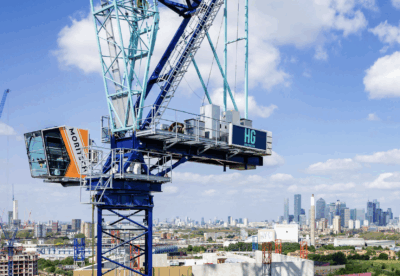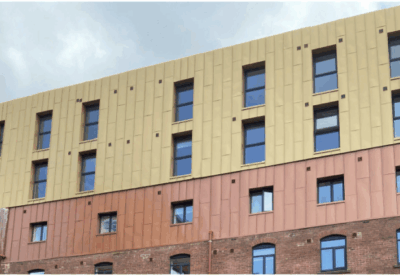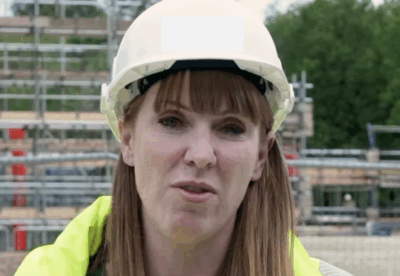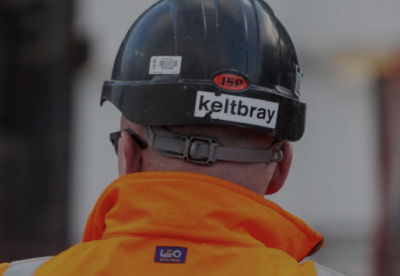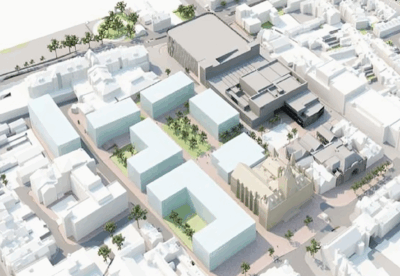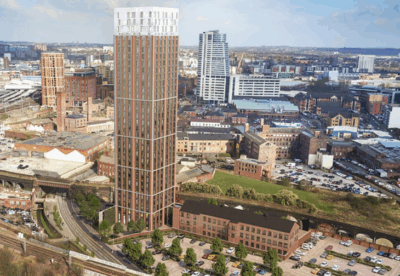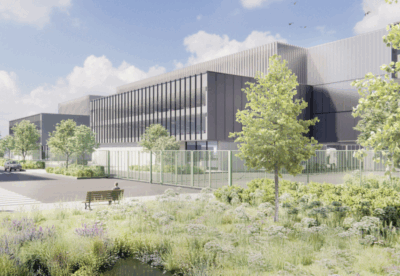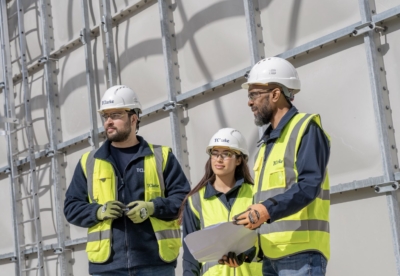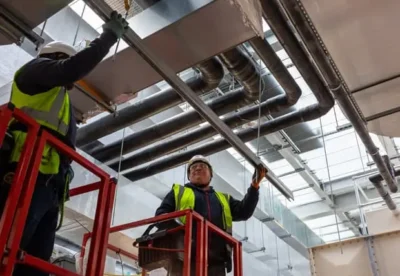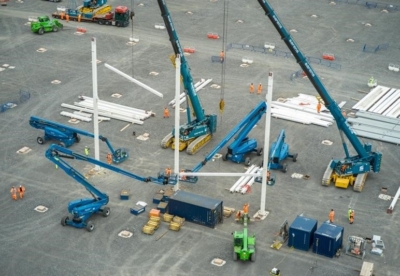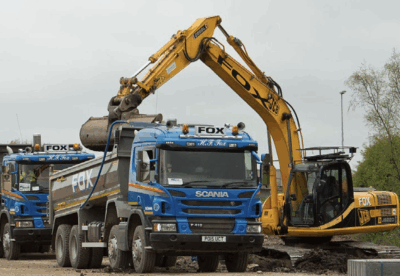The TBM, which measures 11.91m and is the equivalent of almost three double decker buses, is the largest diameter TBM in the UK.
The 1,800 tonne machine began being lowered into the launch chamber in pieces last month where it will be assembled before commissioning and starting to bore the 1.4km tunnel later this summer.
As well as the cutter head, parts of the TBM shield have also recently been lowered down into the launch chamber, as well as the 250-tonne main drive of the TBM.
Elsewhere on the site the conveyor which will carry tunnelling spoil from the chamber to barges to then be transported along the river is approaching completion, and the first of the concrete tunnel rings to be installed as the TBM progresses across the river have also began arriving.
A joint venture between BAM Nuttall, Ferrovial Construction and SK Ecoplant, known as Riverlinx Construction, is delivering the 1.4km twin-lane road tunnel under the River Thames, linking North Greenwich and Silvertown.
As well as relieving pressure on the frequently congested Blackwall Tunnel, once open in 2025 the new twin-bore tunnel will also increase the number of buses able to cross the river at this point.
The tunnel will have a dedicated bus lane in each direction and will operate at least twenty zero-emission buses per hour from opening, radically improving cross-river connectivity, and allowing more people to have access to new jobs and opportunities.
Last month, Riverlinx announced that “Jill” has been chosen as the name for their TBM in recognition of Jill Viner the first female bus driver to drive a London bus in June 1974.





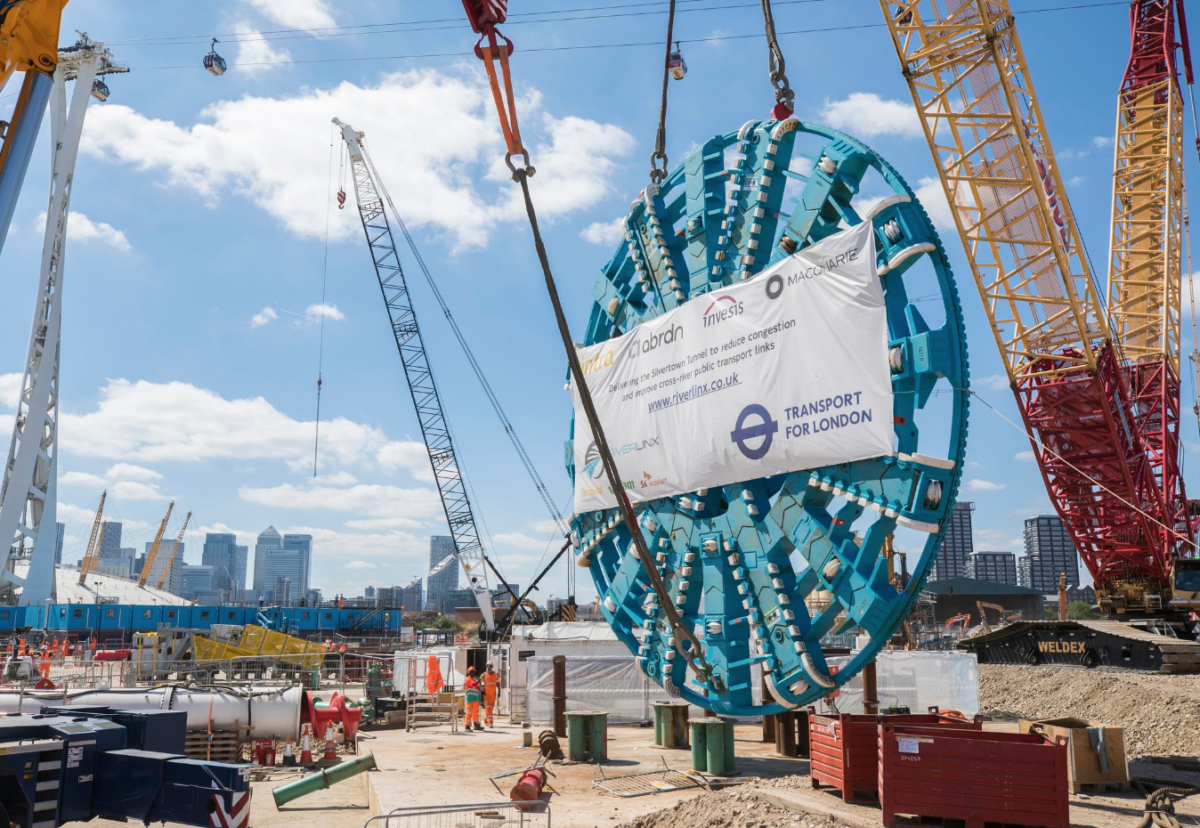


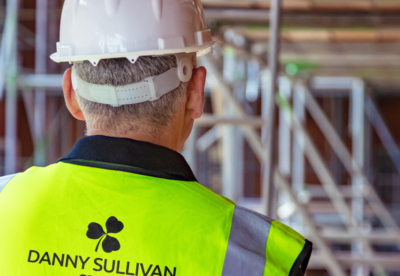




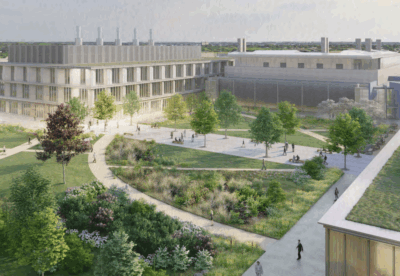




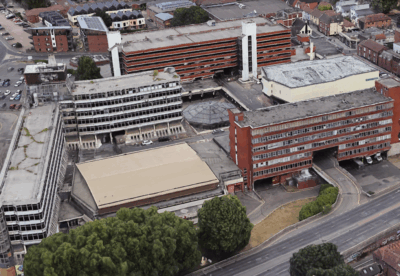
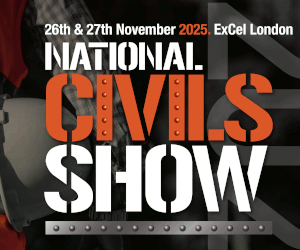
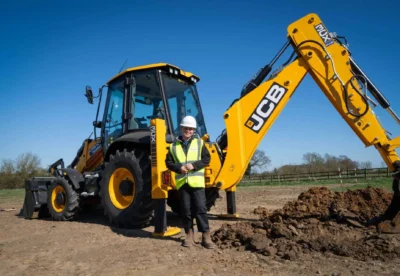

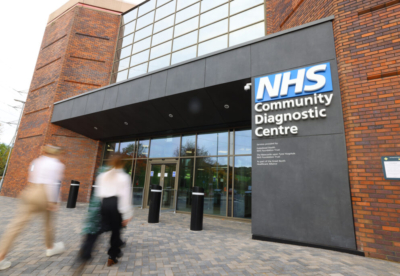
 (300 x 250 px) (2).png)
